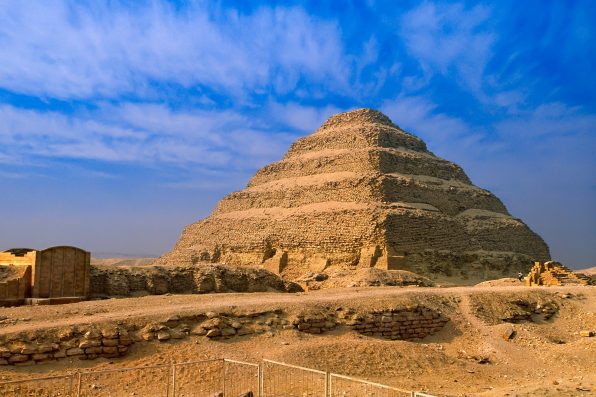A Hydraulic System May Have Been Used To Build The Oldest Pyramid In Ancient Egypt

The pyramids of Egypt are such an architectural wonder that some people have questioned if the structures were truly built by human hands.
There are many unknowns surrounding their construction, including how the huge blocks of stone were transported.
Researchers have proposed that ancient Egyptians may have utilized a hydraulic system that helped them lift stones to build the Step Pyramid of Djoser in Saqqara, Egypt, the oldest pyramid in ancient Egypt.
It is thought to have been constructed around 4,700 years ago as a burial complex for Djoser, pharaoh of ancient Egypt’s Third Dynasty.
The pyramid is located in the Saqqara necropolis, which is on the west bank of the Nile River. The researchers suggest that the hydraulic system involved the flow of water into two shafts inside the center of the pyramid, allowing a lift to raise and lower the large stones used to build the monument. Upon its completion, the pyramid stood over 200 feet tall.
“We see it as a technological prototype,” Xavier Landreau, the lead author of the study from CEA Paleotechnic Institute in France, said.
“Its architecture is revolutionary, with many innovations, making it a technological precursor to the Cheops pyramid. It is the first to disclose two crucial innovations: a pyramid shape and the exclusive use of fully dressed stones for masonry.”
The team of researchers discovered that the Step Pyramid of Djoser was built beneath a watershed, so the ancient Egyptians may have had access to a significant water supply.
Near the pyramid, there is a massive structure known as the Gisr el-Mudir enclosure that experts have not been able to explain in the past.

Dordo – stock.adobe.com – illustrative purposes only
The researchers pointed out that it displays features of a “check dam” that was meant for trapping sediment and water.
The structure is 1.2 miles long and 49 feet thick. It would’ve protected against floods and regulated the flow and quality of water.
Furthermore, the function of a monumental excavation called the “Deep Trench” in the southern part of the moat surrounding Djoser is also unexplained.
It measures around 1,312 feet long and 88 feet deep. Based on hydrological analyses and previous archaeological discoveries, the team argued that the compartments in the moat could have acted as a water treatment plant.
“Taken as a whole, the Gisr el-Mudir and the Deep Trench form a unified hydraulic system that enhances water purity and regulates flow for practical uses and vital needs,” said Landreau.
Finally, the interior of the pyramid is consistent with the implementation of a pulley mechanism that could raise and lower a platform with stones placed on it. The whole system would have reduced the workload of laborers.
More research is required to validate the hypothesis. For example, additional studies need to determine if there was enough water in the landscape to support a hydraulic lift.
Previously, evidence has shown that ancient Egyptians used hydraulics for building ports, constructing irrigation systems, and delivering materials.
Sign up for Chip Chick’s newsletter and get stories like this delivered to your inbox.
More About:News





